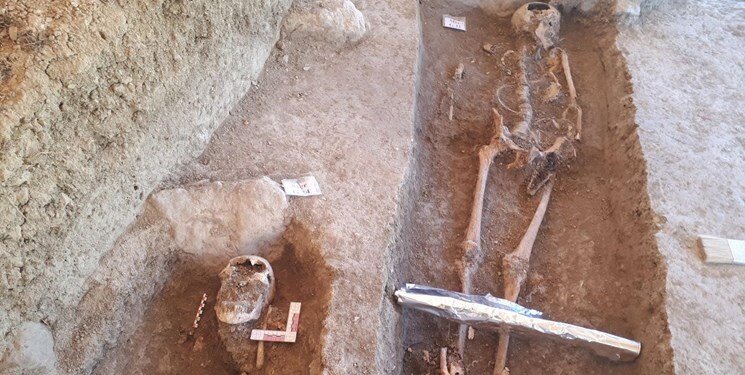Excavations continue at Iron Age cemetery in Semnan

TEHRAN –The third round of archaeological excavation has recently commenced at Iron Age Mersin cemetery in Mahdishahr county, Semnan province.
The project, which will last for two months, aims at saving and protecting the historical site, the provincial tourism chief has said.
Furthermore, during the current season of excavations, two archeological teams will be formed to expedite work and excavate a larger area of the site, Hamidreza Dust Mohammadi announced on Saturday.
Last September, a team of archaeologists and cultural heritage experts commenced an excavation survey on the historical site, trying to retrieve relics before the ancient cemetery sinks into the waters of a dam nearby.
Some 25 tombs and ancient graves were discovered at the site, the senior archaeologist Mehrdad Malekzadeh announced at the time.
The cemetery bears corps and relics from Medes, a branch of Indo-European people, who entered northeastern Iran probably as early as the 17th century BC and settled in the plateau land that came to be known as Media. And it was also used during the Achaemenid era (c. 550-330 BC), according to Malekzadeh.
A number of potteries and personal ornamentations have so far been discovered from the cemetery which bears over 2,000 tomb chambers.
The cemetery at Mersin is located along the southern slopes of the Alborz mountain range, east of the village of Talajim, near the Sefidrud River. The site was discovered during a rescue archaeological survey in the Fenisk Dam basin area. Based on surface materials, the cemetery was dated to the late Iron Age III and early Iron Age IV (c. 600–400 BC). To corroborate this dating, a radiocarbon date was obtained from human collagen from several graves.
As the Iron Age culture in Semnan province has not been well recognized, in August 2014 the Iranian Centre for Archaeological Research organized regular excavations at the site under the direction of Malekzadeh. Three trenches were excavated, covering a total of 235 square meters.
Within trench 3 (10×5m) fifteen human graves were found, distributed in a regular pattern. Some burials were disturbed, but common features were easy to recognize, including the rectangular shape of the grave and the presence of a single body buried in each grave, being interred in an extended position on the back. Most graves had large stones delimiting the burial place and all contained grave goods except grave 4 that was, however, disturbed.
The graves can be divided into two general categories, being either covered by large flat slabs and wood (like graves 5 and 10) or covered only by soil. There is no uniform orientation of the body within the burial. Grave goods were variable and there were, among others, pottery vessels of different types, such as single-handled pitchers, bridge spout bowls, pots with spouts and handles, small jars, pedestal bowls, and twin joined small jars.
The main population centers of Semnan province lie along the ancient Silk Road (and modern-day Imam Reza Expressway), linking Rey (Tehran) with Khorasan (Mashhad). While few visitors spend much time in the area, driving through you can easily seek out several well-preserved caravanserais (notably Dehnamak and Ahowan), cisterns (the Cafe Abenbar in Garmsar is a special treat), and ruined mud citadels (Padeh is lumpy but fascinating). The large, bustling cities of Semnan, Damghan, and Shahrud (Bastam) all have a small selection of historic buildings and Semnan has a fine old covered bazaar.
ABU/MG

Leave a Comment